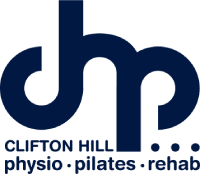International Day of Women and Girls in Science
International Day of Women and Girls in Science https://www.cliftonhillphysiotherapy.com.au/wp-content/themes/corpus/images/empty/thumbnail.jpg 150 150 admin admin https://secure.gravatar.com/avatar/9b3ceb22cc35d11e1b25afbab0816820?s=96&d=mm&r=g- admin
- no comments
Director Sallie Cowan presents this blog on her recent paper published in the British Journal of Sports Medicine “Sport and exercise medicine/physiotherapy publishing has a gender/sex equity problem: we need action now”
Ref: Cowan SM, Kemp JL, Ardern CL, et al. Br J Sports Med 2023;:1–6. doi: bjsports-2022-106055
As a collective of women researchers we are conscious of gender inequality. Gender inequality had been well documented in many scientific fields including Sports Science, but not in our fields of Sport and Exercise Medicine/ Physiotherapy. We were interested to investigate whether there was a more equal representation of genders in authorship in our fields of research, given that women are graduating in similar numbers to men.
The biggest challenge with this study was navigating the challenges of understanding the representation of sex and gender in the peer review publications we examined.
Why is this study important?
This is the first study to investigate sex/gender representation of research author leadership and research participants in sport and exercise medicine/physiotherapy peer review publications.
What did the study find?
Consistent with other scientific fields women were poorly represented as first and last authors of research and women participants poorly represented in research. Disappointingly little had changed in the 10 period between our assessments. In 2018/2019 women authors accounted for only 33% of first and last author positions on original research articles, and 25% of editorial/opinion pieces first authors. Women participants are also under-represented; in the four years studied, only 10% of > 7.5 million participants involved in original research were women.
What are the key take-home points?
It is clear that sport and exercise medicine/physiotherapy has gender/ sex equity problem; the essential question is what can the field do to fix this problem?
We feel these striking results demand bold actions to close both the author and participant gender gap in sport and exercise medicine/physiotherapy publishing. This is vital to stop women’s careers being systematically impeded by gender/sex assumptions and stereotype1 and to address the inequity in research participation. We propose four pragmatic actions (targeting Granting Bodies, Publishers, Editors & Editorial boards and Research Leads) to close the gender/sex gap in author representation and leadership, and five (targeting editors, authors and researchers) to address women participant representation in sport and exercise medicine/physiotherapy research. Check out the full article here.
1. Singer M. Beyond bias and barriers. Science 2006;314(5801):893. doi: 10.1126/science.1135744
- Posted In:
- General

